- Home
- Zadie Smith
Feel Free: Essays Page 17
Feel Free: Essays Read online
Page 17
MARK BRADFORD’S NIAGARA
There is walking and then there is dancing. Between the two I like to think of a curving line, with plain utility at one end and the scandalously unnecessary at the other. As everyone knows, Marilyn Monroe was pretty far along that curve, as close as one can come to dancing while still walking. In her classic 1953 movie Niagara she takes a legendary walk away from the camera, hips swinging—roiling—in a mode long since memorialized by catwalk models, drag queens, prima donnas, freaks and queers, street punks of all persuasions. Anyone looking to make their daily stroll down the street something more than the usual slog from A to B.
We have on hand a popular shorthand for this way of moving through the world: “camp.” But it’s a word too often stupidly and narrowly used, or else brutally defined. There is the familiar camp of excess—the extra flourish, the elaborate vibrato, the gold taps on the gold sink—but this is only one corner of camp’s vast kingdom. A hip-hop swagger is as camp as Marilyn’s mosey. Ditto the young recruit’s goose-step march across the parade ground. Camp: doing more than is necessary with less than you need. The less-than-you-need part is important. Camp begins in lack, in absence. It is the nuclear option of the disenfranchised. When you take everything from the slave, for example—family, clothes, paper, ink, and finally even his drum—you then leave only the body, yes, only that. And one of the things the disenfranchised slave did with his body was the shim-sham, that fabulous dance of a walk, as camp as any movement on earth. Camp is our flagrant and delicious survival in the face of and despite the fact. Camp makes lemonade without lemons—or sugar. It can make cocktails—as Frank O’Hara once had it—“out of ice and water.” And now I watch Mark Bradford’s neighbor walking away from me just as Marilyn did, albeit in a baggy pair of yellow shorts, battered boots, a half-ruined vest, and pristine white tube socks. Here is sex appeal and swagger and a fierce aesthetic, all managed on the tiniest of budgets. An outdoor public performance for whoever happens to be watching. All eyes on me. What does the unseen passerby make of him? We can’t know, but we certainly understand that not all such walks are received equally. Here is Marilyn, for example, in her very last interview, recalling one of her own earliest walks:
The whole world was always closed to me . . . you know? I just felt like I was on the outside of the world and suddenly when I was eleven—everything opened up! Kids in school . . . well, it’s true mostly they were boys but even the girls paid a little attention to you just because they thought: hmm, she’s to be dealt with! For instance I had this long walk to school . . . It was a two-and-a-half-miles to school and a two-and-a-half-miles back and it was just sheer pleasure! Every fellow honked his horn and I’d wave back and I thought: gee, what happened?! The world became friendly, you know? It opened up to me.
For Marilyn, a large part of this was technique, a response to her puberty but not a necessary one: she chose the path. It was an affect she learned to “turn on.” But some of us may find we have less choice about it: we never could simply walk from A to B, it doesn’t come naturally. Indeed it would be a great and effortful performance in itself to walk “straight.” This can be dangerous: our place on the curve is too visible to everybody at all times. We are at the mercy of others—gawkers, school bullies, stand-up comics, guffawing audiences—who are all too eager to humiliate and demean. There used to be a category in the New York drag balls—“Realness”—precisely to defend against such humiliation. Realness was about walking in a convincing straight line. Could you get from A to B in the dullest way possible, as if dancing to B never occurred to you? Can you play it straight, look utterly real? Pass when passing is required? A cloak of temporary invisibility. Marilyn, by contrast, chose to make herself permanently sexually visible, but she did it in the knowledge that when a hot blonde dances down the street—in America at least—the world opens up to her. (Although that’s not the whole story, as Marilyn well knew: all the approval couldn’t heal the wound within her, and for this reason she remains an idol to street punks, drag queens, prima donnas, freaks and queers, and all the lost and wounded. But still: at the level of performance, for Marilyn, the world “opened up.”)
In Bradford’s Niagara there’s no way of knowing if the world is open for his neighbor’s performance or filled with daily threat and fear. As with Marilyn’s walk, possible viewers are not contained in the frame—the walk itself takes up the visual landscape. The image is defiant in its very hermeticism, it is fabulously insulated and self-sufficient. It is a performance in the face of and despite the fact. Way ahead of him we can see the traffic light showing its red hand—symbol of a closed world—but he pays it no mind and strides into the future no differently when this light eventually turns and stays green. Camp does not ask permission. It marches to the beat of its own drum. You are king—or queen—of this particular stretch of sidewalk, simply because you woke up this morning and decided that it should be so. In such walks we spy resistance, defiance, joy. It is a miraculous matter that some people should be able to telegraph all these things simply by walking. It is as if, having realized that invisibility is not a viable option, they choose to do something practical with their constant audience. You looking at me? Well now, let me give you something to see! In this frame of mind, a pothole in the sidewalk is easily overcome by way of a joyful and balletic leap.
I want to linger on the word “frame.” What turns a walk into a strut is precisely a frame, even if the frame is only a certain intention. Just as it is in a gallery, something has been isolated and therefore illuminated. I had never seen endpapers, for example, not really—though I had used them often enough in my hair—until Bradford framed them for me. Turning utility into pleasure is a deep, rich seam in his work. Those now famous endpapers, once employed—by the artist himself—in the treatment of hair, he transformed into a wavelike visual grammar. He gave the people of New Orleans an ark that does not literally rescue yet still uplifts. He has appropriated and revealed merchant posters, demonstrating the dynamic and visual artistry that exists in street-level local economies all over America. Doing more than is necessary with less than you need. This has been the cultural legacy of so many oppressed and minority groups in America. “We shall overcome” is the phrase that historically has encapsulated their struggle: the approved, authentic, mainstream and acceptable face of struggle. It is a noble slogan. But underneath it and all around us is the unruly daily application, which has as much to do with leaping defiantly over cracks in the sidewalk as with sit-ins and marches, speeches and elections. “As a culture,” Bradford claimed, in a 2009 interview, “the black community is in flux. Nobody knows who’s in charge, and everybody’s screaming that it’s them, but ain’t nobody really at the helm right now.” In 2016 the Black Lives Matter movement has consolidated this sense of a leaderless movement with foot soldiers in every corner of the land. Some of them are indeed sitting in and marching and campaigning, but it’s my sense that many more have taken the message and applied it in disparate ways to their daily practice. I see black hair, in its natural state—free of endpapers—springing out of all the scalps of my friends and students and myself. I see kids expanding the old strictures of the hip-hop aesthetic into Afro-punk and Afro-weird and black-girl-magic and every kind of hyphenated existence. And I see the walk. I see folks making a lot of a little.
To swagger and to slay. To take it to church—or to the bridge. Killing it, shaking it, remaking it. All eyes on me. Camp is a dunk shot in a ballgown. It’s knowing that sometimes the most brutal words you’ll ever have thrown at you in the street will come from the people who look just like you. Given that this is true, there can be defiance in the smallest, campiest of actions. In being seen in all your glory, and within the terms of your own self-conception. If you can slay in a pair of baggy old yellow shorts and a tattered vest! Bradford reminds us of the performance art of everyday life, the political urgency of street-level grace.
A BIRD OF FEW WORDS: NARRATIVE MY
STERIES IN THE PAINTINGS OF LYNETTE YIADOM-BOAKYE
The exhibition space on the fourth floor of the New Museum, in New York, is a long room with a high ceiling. You might expect towering video screens in here, or something bulky and three-dimensional, requiring circling—entering, even. But on a recent day the room was filled with oils. The show has a melancholy, literary title, “Under-song for a Cipher,” and consists of seventeen paintings hung low, depicting a set of striking individuals, all slightly larger than human scale, though not imposingly so. Most are on herringbone linen; one is on canvas. It’s impossible to avoid noticing that they are all—every man and each woman—physically beautiful. Mostly they are alone. They sit, stretch, lounge, stand, and are often lost in contemplation, their eyes averted. If they are with others, the company is never mixed, as if too much heat might be generated by introducing that half-naked man over there to this sharp-eyed dancing girl.
In the oeuvre of the British-Ghanaian painter Lynette Yiadom-Boakye, there are quite a few dancers, lithe in their leotards, but all her people look as though they might well belong to that profession. They are uniformly elegant. One young man puts his hands on his knees and laughs, with his legs apart and his feet turned out; he is dressed simply, like the rest, in blocks of swiftly laid paint, creating here a black vest, there some white trousers. No shoes. The artist dislikes attaching her figures to a particular historical moment, and there’s no way around the historicity of shoes. Sometimes the men hold animals like familiars—an owl, a songbird, a cat. The colors are generally muted: greens and grays and blacks and an extraordinary variety of browns. Amid this sober coloration splashes of yellow and pink abound, and vivid blues and emerald greens, all tempered by the many snowdrop gaps of unpainted canvas, like floral accents in an English garden.
The surrounding walls are painted a dark heritage red, bringing to mind national galleries and private libraries, but also, for this viewer, the books you might find in such places, specifically the calico covers of nineteenth-century novels. This red has the effect of bringing a diverse selection of souls together, framing and containing them, much like a novel contains its people, which is to say, only partially. For Yiadom-Boakye’s people push themselves forward, into the imagination—as literary characters do—surely, in part, because these are not really portraits. They have no models, no sitters. They are character studies of people who don’t exist.
In many of Yiadom-Boakye’s interviews, she is asked about the source of her images, and she tends to answer as a novelist would, citing a potent mix of found images, memory, sheer imagination and spontaneous painterly improvisation (most of her canvases are, famously, completed in a single day). From a novelist’s point of view, both the speed and the clarity are humbling. Subtleties of human personality it might take thousands of words to establish are here articulated by way of a few confident brushstrokes. But the deeper beguilement is how she manages to create the effect of wholly realized figures while simultaneously confounding so many of our assumptions about the figurative. The type of questions prompted by, say, Holbein (What kind of a man was Sir Thomas More?) or Gainsborough (What was the social status of Mr. and Mrs. Andrews?), or when considering a Lucian Freud (What is the relation between painter and model?), are all short-circuited here, replaced by an existential query not much heard in contemporary art: Who is this? The answer is both literal and liberating: No one. Nor will the titles of these paintings identify them. A dancing girl in the midst of an arabesque bears the caption “Light of the Lit Wick.” A gentleman in an orange turtleneck with a cat on his shoulder: “In Lieu of Keen Virtue.” That antic fellow with his hands on his knees: “A Cage for the Love.” We have become used to titles that ironize or undercut what we are looking at, providing conceptual scaffolding for feeble visual ideas, or weak punchlines to duller jokes. For Yiadom-Boakye, titles are allusive; they should be considered, she has said, simply as “an extra mark in the paintings.” For an artist, she is unusual in describing herself as a writer as much as a painter—her short stories and prosy poems frequently appear in her catalogues. In a recent interview in Time Out, she reflected on the relation between these twin roles. “I don’t paint about the writing or write about the painting,” she said. “It’s just the opposite, in fact: I write about the things I can’t paint and paint the things I can’t write about.” Her titles run parallel to the images, and—like the human figures they have chosen not to describe or explain—radiate an uncanny self-containment and serenity. The canvas is the text.
Given the self-confidence of this work, it’s strange to note the anxiety that Yiadom-Boakye provokes in some critics. In the catalogue that accompanies the New Museum show, there is an essay by the academic art critic Robert Storr in which he deems it necessary to defend the work against the perceived retrogression of figurative painting: “If you accept Greenbergian premises and methodologies, representation was definitively eclipsed by abstraction sometime in the early fifties”—a line of argument that might lead you to believe Clement Greenberg is still busy over at Commentary instead of being dead for more than two decades. The mid-century debate over the figurative and the abstract—which Greenberg’s coining of the term “post-painterly abstraction” did much to further—aligned the figurative with illusion: the illusion of depth in a canvas, and the pretense of three-dimensional human life on what was, in truth, an inert, two-dimensional surface. The figurative was fundamentally nostalgic; its subject matter was kitsch; it was too easily manipulated for the purposes of propaganda, both political and commercial. Sentimental scenes of human life were, after all, what the Nazis and the Stalinists had championed. They were what the admen of Madison Avenue utilized every day. Meanwhile, the abstract sought to continue, in the realm of the visual, the modernist critique of the self. But, even when a critic allows for the somewhat antique formulation of these arguments (as Storr goes on to do), there is still something about the vicarious emotion provoked by the figurative that must be explained away or excused.
And so, in the same essay, Yiadom-Boakye is cautiously framed as the kind of artist who depicts an extreme otherness: “The impact of her pictures is of encountering people ‘we’—the general North American art audience—have never met, coming from a world with which ‘we’ are unfamiliar. One that we have no basis for generalizing about or projecting our fantasies onto.” Yet the subjects of these paintings are not members of a recently discovered indigenous tribe in Papua New Guinea but, rather, many handsome black men and women in unremarkable domestic settings.
There is a respectful caution in this kind of critique which, though undoubtedly well intended in theory, in practice throws a patronizing chill over such work. Yiadom-Boakye is doing more than exploring the supposedly uncharted territory of black selfhood, or making—in that hackneyed phrase—the invisible visible. (Black selfhood has always existed and is not invisible to black people.) Nor are these paintings solely concerned with inserting the black figure into an overwhelmingly white canon. Such pat truisms have a limited utility, especially when we find them applied without alteration to artists as diverse as Chris Ofili, Kerry James Marshall and Kehinde Wiley. Ofili, in a delicate written response to Yiadom-Boakye’s work, passes over the familiar rusty argument of figuration versus abstraction and attends instead to the intimate visual details: “The tightness of her bun. The size of his ear. She knew so much about so little of him. She said so little he heard so much.” Exactly. Here are some paintings of he and she, him and her. They say little, explicitly, but you hear much.

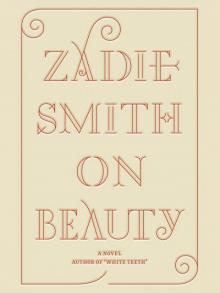 On Beauty
On Beauty Nw
Nw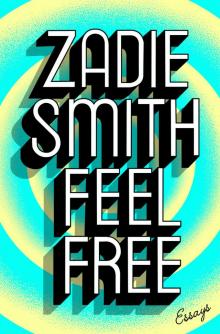 Feel Free: Essays
Feel Free: Essays The Book of Other People
The Book of Other People White Teeth
White Teeth Changing My Mind: Occasional Essays
Changing My Mind: Occasional Essays N.W.
N.W. Swing Time
Swing Time The Embassy of Cambodia
The Embassy of Cambodia The Autograph Man
The Autograph Man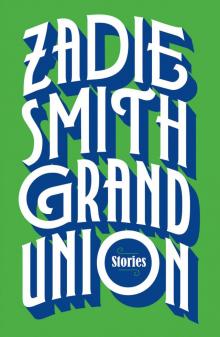 Grand Union
Grand Union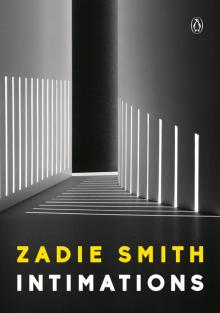 Intimations
Intimations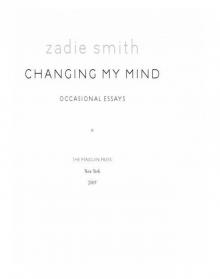 Changing My Mind
Changing My Mind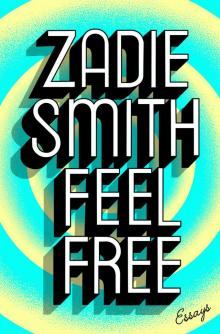 Feel Free
Feel Free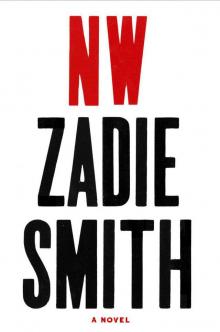 NW: A Novel
NW: A Novel